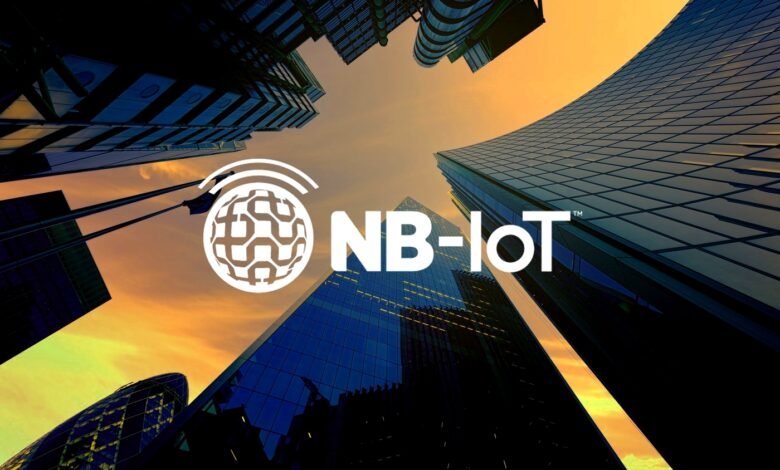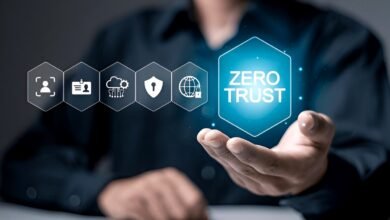IoT and NB-IoT: Key Technologies Powering German Smart Devices
As Germany pushes towards a more connected and sustainable future, the integration of IoT and NB-IoT in various sectors is becoming increasingly vital.

In recent years, the technological landscape in Germany has undergone a rapid transformation, driven largely by innovations in the Internet of Things (IoT) and Narrowband Internet of Things (NB-IoT). These two technologies are at the heart of Germany’s smart revolution, enabling devices to communicate efficiently, collect data, and make intelligent decisions. As Germany pushes towards a more connected and sustainable future, the integration of IoT and NB-IoT in various sectors is becoming increasingly vital.
Understanding IoT and NB-IoT
IoT (Internet of Things) refers to the network of physical objects embedded with sensors, software, and other technologies to connect and exchange data with other devices and systems over the Internet. These “smart” devices range from household items like refrigerators and thermostats to industrial machinery and vehicles.
NB-IoT (Narrowband Internet of Things) is a low-power wide-area network (LPWAN) technology developed specifically for IoT applications. It operates in licensed frequency bands and is designed to enable efficient communication over long distances with minimal power consumption.
The Rise of IoT and NB-IoT in Germany
Germany, known for its engineering prowess and strong industrial base, has been quick to embrace IoT and NB-IoT technologies. The country’s Industry 4.0 initiative aims to digitize manufacturing through smart technologies, with IoT and NB-IoT forming the backbone of this transformation.
The German government and private sectors are investing heavily in smart infrastructure, smart mobility, and smart cities, all of which rely heavily on interconnected devices and robust communication networks. This has led to widespread adoption of IoT and NB-IoT across the country.
Applications of IoT and NB-IoT in Smart Devices
1. Smart Cities
IoT and NB-IoT play a crucial role in the development of smart cities in Germany. By embedding sensors in streetlights, traffic systems, and public transportation, cities like Berlin and Munich are improving efficiency, reducing energy consumption, and enhancing public safety.
Smart waste management systems use NB-IoT sensors to monitor bin levels and optimize collection routes, while air quality sensors provide real-time data to help authorities take proactive measures.
2. Smart Energy
Germany’s transition to renewable energy is being facilitated by smart grid technologies powered by IoT and NB-IoT. Smart meters and sensors enable real-time monitoring and management of electricity consumption, helping both consumers and utilities make informed decisions.
These technologies also allow for better integration of renewable energy sources like solar and wind by monitoring performance and predicting maintenance needs.
3. Industrial IoT (IIoT)
The German manufacturing sector is undergoing a digital transformation with the help of Industrial IoT. Factories are equipping machines with IoT sensors to monitor operations, predict failures, and optimize production processes.
NB-IoT provides the necessary connectivity for remote areas within large industrial complexes, ensuring reliable data transmission with low latency and high security.
4. Smart Agriculture
Agriculture in Germany is becoming more efficient and sustainable thanks to IoT and NB-IoT. Farmers are using smart devices to monitor soil moisture, weather conditions, and crop health in real time.
NB-IoT’s long-range and low-power capabilities make it ideal for rural agricultural applications, enabling devices to transmit data without the need for frequent battery replacements.
5. Smart Healthcare
Germany’s healthcare system is integrating IoT and NB-IoT to provide better patient care. Wearable health devices, remote monitoring systems, and smart hospital equipment are all part of this ecosystem.
NB-IoT ensures secure and reliable data transmission for critical health information, supporting timely medical interventions and improving patient outcomes.
Advantages of NB-IoT Over Traditional Connectivity
NB-IoT offers several benefits that make it uniquely suited for IoT applications:
- Low Power Consumption: Devices can operate for up to 10 years on a single battery.
- Extended Coverage: NB-IoT can penetrate deep into buildings and cover remote areas.
- High Capacity: Supports massive numbers of connected devices in a single network.
- Secure and Reliable: Operates on licensed spectrum, ensuring minimal interference and enhanced security.
These advantages are crucial for supporting the scale and complexity of IoT applications in Germany.
Challenges and Solutions in IoT and NB-IoT Adoption
While the benefits are substantial, there are challenges to widespread IoT and NB-IoT adoption:
- Interoperability: Ensuring that devices from different manufacturers can communicate seamlessly.
- Security: Protecting sensitive data from cyber threats is a top priority.
- Scalability: Building infrastructure that can scale with the growing number of devices.
Solutions include the development of standardized protocols, robust encryption technologies, and cloud-based platforms that can adapt to increasing data volumes.
The Role of 5G in Enhancing IoT and NB-IoT
5G technology is set to amplify the capabilities of IoT and NB-IoT in Germany. With its ultra-low latency, high bandwidth, and ability to connect a massive number of devices, 5G will serve as a key enabler for real-time applications and advanced analytics.
NB-IoT, which is already compatible with 5G networks, will benefit from improved performance and integration, further accelerating the deployment of smart devices across the country.
Future Outlook: What Lies Ahead for Germany
The future of IoT and NB-IoT in Germany looks promising. As these technologies mature, they will unlock new possibilities across sectors such as transportation, logistics, home automation, and public safety.
Germany is also poised to be a global leader in IoT innovation, thanks to its strong regulatory framework, advanced research institutions, and thriving tech ecosystem.
Key trends to watch include:
- Edge Computing: Processing data closer to the source to reduce latency.
- AI Integration: Using artificial intelligence to derive insights from IoT data.
- Sustainable Technologies: Leveraging IoT for Energy Efficiency and Environmental Monitoring.
Conclusion
IoT and NB-IoT are not just buzzwords; they are transformative technologies that are reshaping how Germany operates. From smart homes and cities to advanced healthcare and industry, these innovations are at the core of the country’s digital future.
As Germany continues to invest in these key technologies, the potential for smarter, more sustainable living becomes ever more attainable. For businesses and consumers alike, the integration of IoT and NB-IoT offers unprecedented opportunities to innovate, optimize, and lead in the global digital economy.











